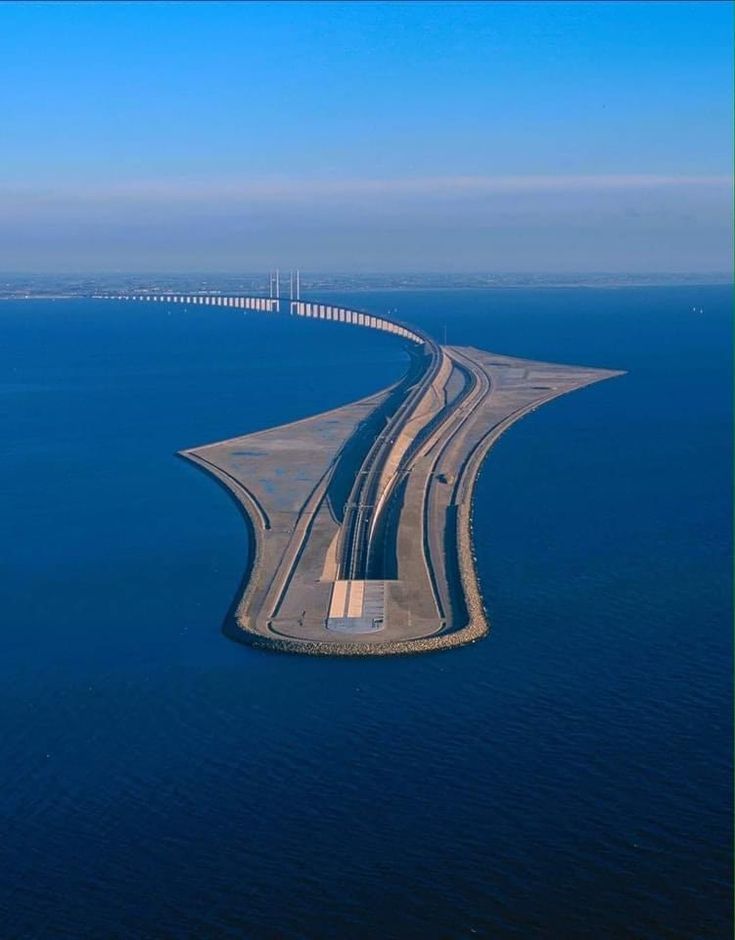Stretching across the Øresund Strait, the Øresund Bridge is one of the most remarkable engineering feats in modern Europe. Opened in 2000, this combined road-and-rail link connects Copenhagen, Denmark, with Malmö, Sweden, over a distance of nearly 10 miles (16 kilometers). What makes it extraordinary is its unique hybrid design — part bridge, part artificial island, and part underwater tunnel.

The journey begins on the bridge itself, a soaring structure with graceful cable-stayed towers rising above the sea. Midway, the bridge disappears onto a man-made island called Peberholm, created solely to support the transition. From there, the roadway and railway plunge into the Drogden Tunnel, a 4-kilometer underwater passage that emerges on the Danish side near Copenhagen Airport.
This design was not just about aesthetics but also necessity. An uninterrupted bridge would have interfered with air traffic, while a full tunnel would have been prohibitively expensive. By combining both, engineers created an elegant and practical solution.

Beyond its engineering brilliance, the Øresund Bridge carries deep symbolic weight. Once separated by sea and centuries of rivalry, Denmark and Sweden are now bound by a physical link that has fostered trade, tourism, and cultural exchange. Millions of commuters and travelers cross it each year, making the two cities feel like twin urban centers rather than nations apart.
As one engineer described it: “The Øresund is not just a bridge — it is a handshake in steel and stone.”
🌊🌉 Today, the Øresund Bridge stands as both a marvel of design and a powerful reminder of connection — where two countries meet above and below the sea.





